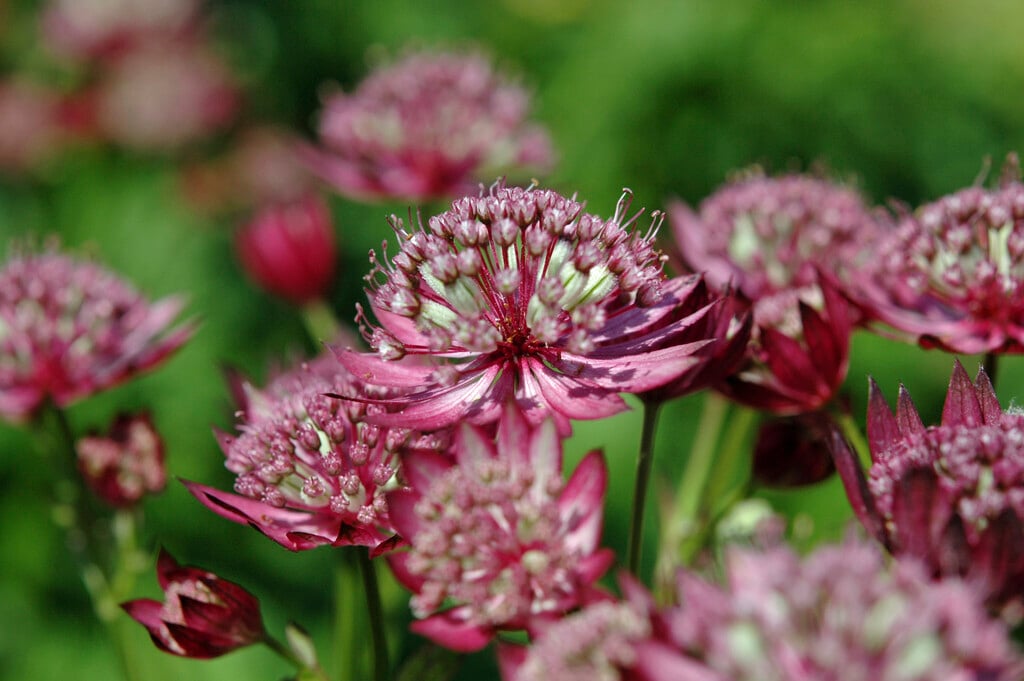Astrantia major 'Rubra'
masterwort 'Rubra'
A clump-forming perennial up to 90cm high with deeply lobed, toothed, dark green leaves, dark red-green stems, and umbels of dark plum-coloured pincushion-like flowers surrounded by a ruff of dark red bracts from early to late summer
Size
Ultimate height
0.5–1 metresTime to ultimate height
2–5 yearsUltimate spread
0.5–1 metresGrowing conditions
Moisture
Moist but well–drained, Poorly–drainedpH
Acid, Alkaline, NeutralColour & scent
| Stem | Flower | Foliage | Fruit | |
| Spring | Red | Green | ||
|---|---|---|---|---|
| Summer | Red | Pink Red | Green | |
| Autumn | Red | Green | ||
| Winter |
Position
- Full sun
- Partial shade
Aspect
South–facing or North–facing or West–facing or East–facing
Exposure
Sheltered Hardiness
H7Botanical details
- Family
- Apiaceae
- Native to GB / Ireland
- No
- Foliage
- Deciduous
- Habit
- Clump forming
- Genus
Astrantia are clump-forming herbaceous perennials with palmately lobed basal leaves and branched, erect, wiry stems bearing compact umbels of tiny flowers surrounded by a rosette of showy bracts
- Name status
Accepted
How to grow
Cultivation
Grow in moist, fertile, preferably humus-rich soil (incorporate plenty of organic matter when planting if necessary) in partial shade, or in sun if the soil stays reasonably moist in summer; mulch with organic matter in spring
Propagation
Propagate by division in autumn or spring
Suggested planting locations and garden types
- City and courtyard gardens
- Cottage and informal garden
- Gravel garden
- Prairie planting
- Wildlife gardens
- Cut flowers
- Flower borders and beds
Pruning
No pruning required, but cutting faded flowers back to the ground will encourage further flowers
Pests
May be susceptible to astrantia leaf miner
Diseases
Generally disease-free
Love gardening
Sign up to receive regular gardening tips, inspiration, offers and more
View our Privacy Policy
Get involved
The Royal Horticultural Society is the UK’s leading gardening charity. We aim to enrich everyone’s life through plants, and make the UK a greener and more beautiful place.
